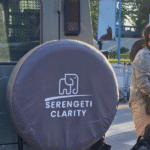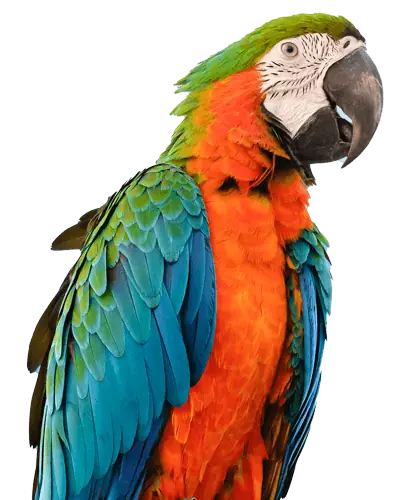Night Safari Photography in Tanzania: Capture Nocturnal Wildlife Like a Pro
Experiencing a safari in Tanzania is incredible by day, but the real magic often happens after the sun sets. Night safaris unlock a world of nocturnal wildlife activity—from stealthy predators on the hunt to glowing eyes peering through the darkness and the awe-inspiring starry African sky above.
Whether you’re in the Serengeti National Park, Ngorongoro Crater, or Tarangire National Park, night photography offers unforgettable moments—but it comes with its challenges. In this guide, we share expert tips, gear recommendations, camera settings, and ethical guidelines to help you capture stunning nocturnal wildlife photos during your safari.
1. Essential Gear for Night Safari Photography 🎒📷
Capturing sharp, high-quality images at night requires the right equipment. Here’s what you need:
- Full-Frame Camera – Performs better in low light (e.g., Sony A7S III, Canon EOS R6, Nikon Z6 II).
- Fast Lenses (f/2.8 or wider) – Prime or zoom lenses let more light in for clear shots.
- Tripod or Monopod – For stability during long exposures; a beanbag can also help inside safari vehicles.
- High ISO Capability – ISO 3200+ is essential for low-light wildlife photography.
- Remote Shutter Release – Minimizes camera shake.
- Red or Green Headlamp – Preserves night vision while adjusting camera settings.
- Optional Flash/Spotlight – Only if permitted; some reserves prohibit artificial lighting.
💡 Pro Tip: Pack extra batteries—long exposures and high ISO can drain power quickly.
2. Challenges of Night Safari Photography 🌑🔦
Understanding the unique challenges of night photography ensures better results:
- Low Light Conditions – Fast-moving animals are harder to capture.
- Limited Visibility – Animals blend into the darkness; patience is key.
- Safari Rules – Many parks restrict flash to avoid disturbing wildlife.
- Tripod Restrictions – Inside vehicles, tripods are often impractical; use a beanbag or monopod instead.
3. Best Camera Settings for Night Photography on Safari 🎛️
To balance light, sharpness, and noise, adjust your camera settings:
- Mode: Manual (M)
- Aperture: f/2.8 or widest possible
- Shutter Speed: 1/100–1/250s for moving animals; 1–10s for stars or landscapes
- ISO: 3200–12,800 (find your camera’s sweet spot)
- Focus: Manual or Spot AF (autofocus struggles in low light)
- White Balance: Auto, Tungsten, or Cloudy
💡 Pro Tip: Use back-button focus to lock onto animals more efficiently in the dark.
4. Capturing Nocturnal Wildlife 🦁🦉
Night safaris reveal animals rarely seen during the day. Focus on:
- Leopards – Graceful hunters under moonlight.
- Lions – More active and hunting at night.
- Hyenas – Roaming and scavenging the savanna.
- Owls & Nightjars – Perched quietly, scanning for prey.
- Bush Babies & Genets – Quick-moving with reflective eyes.
Photography Tips:
- Look for glowing eyes—the tapetum lucidum creates stunning reflections.
- Slightly underexpose (-1 to -2 EV) to preserve highlights.
- Use burst mode to increase chances of sharp images.
- If allowed, a soft spotlight with a diffuser illuminates subjects naturally.
5. Shooting the Night Sky ✨🌌
Africa’s remote safaris offer pristine night skies, ideal for astrophotography.
Star Photography Settings:
- Shutter Speed: 15–30 seconds
- Aperture: f/2.8 or wider
- ISO: 3200–6400
- Focus: Manual, set lens to infinity (∞)
💡 Pro Tip: Include silhouettes of acacia trees, safari vehicles, or wildlife to create a dramatic foreground.
6. Ethical Considerations: Respect Wildlife at Night 🚫⚡
Your photography should never disturb wildlife:
- Follow safari rules; avoid flash if prohibited.
- Use infrared or red lighting to minimize disruption.
- Limit prolonged exposure of bright lights to animals.
- Stay quiet and avoid sudden movements—let wildlife behave naturally.
Responsible photography ensures Tanzania’s nocturnal wildlife thrives for generations to come.
7. Final Tips for Epic Night Safari Photos 🔥
- Arrive early for twilight (blue hour) for natural light shots.
- Use a beanbag or vehicle door for camera stability.
- Apply noise reduction in post-processing (Lightroom or Photoshop).
- Experiment and practice—night photography is challenging but rewarding!
Why Night Safari Photography is a Must in Tanzania 🌙
Photographing wildlife at night offers a rare glimpse into the hidden rhythms of the African bush. From leopards prowling the grasslands to glowing eyes peeking from the darkness, and the Milky Way illuminating the Serengeti sky, a night safari creates memories and photographs you’ll treasure forever.
If you’re planning a Tanzania safari, make sure your itinerary includes at least one night safari—it’s a game-changer for photographers and wildlife enthusiasts alike.
📸 Ready to capture the magic of Tanzania after dark? Contact Serengeti Clarity to plan your private safari with expert guides who know the best spots for night photography and nocturnal wildlife encounters.








